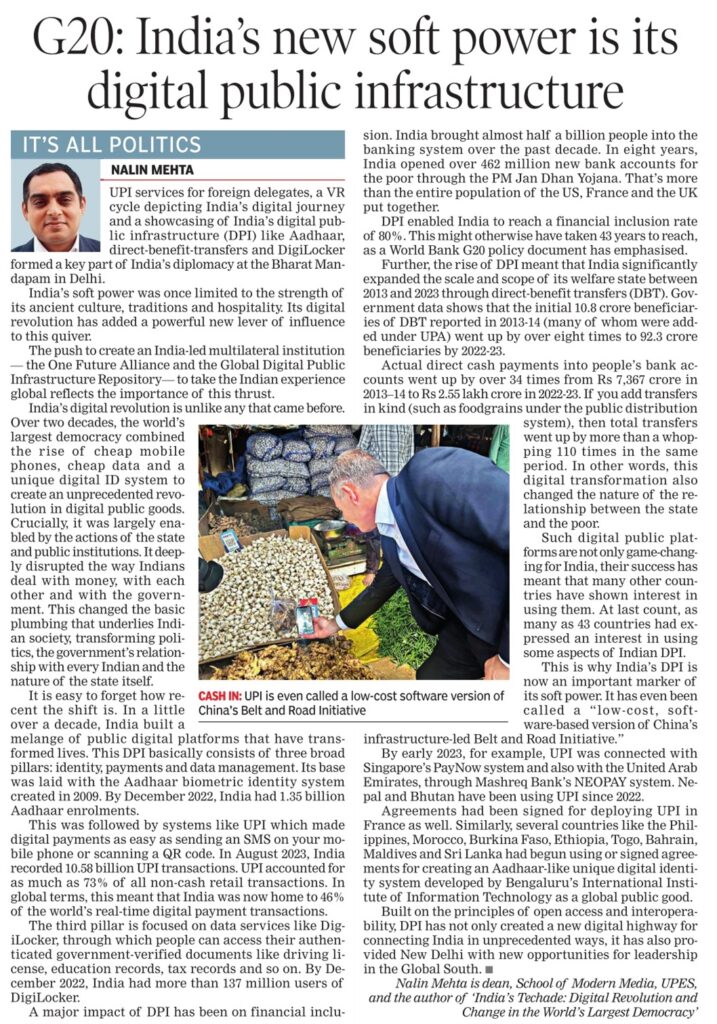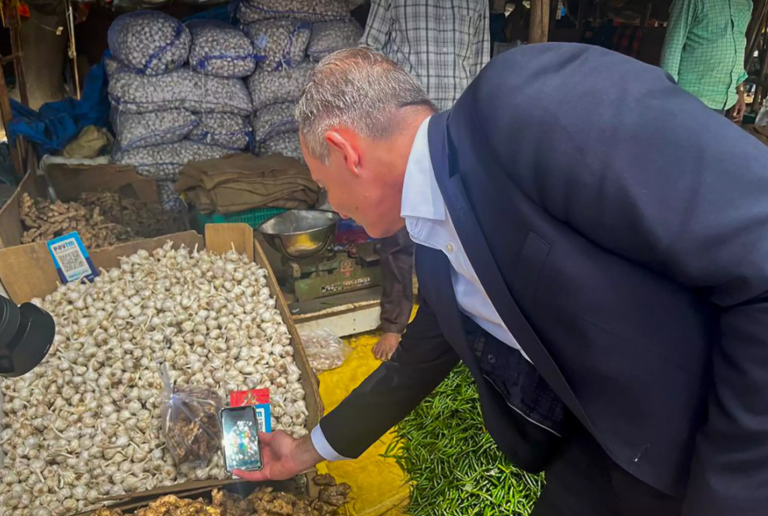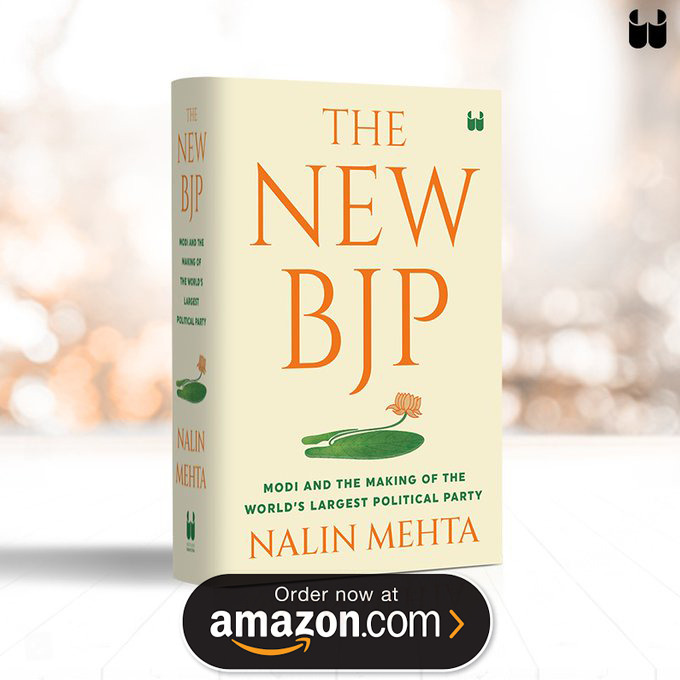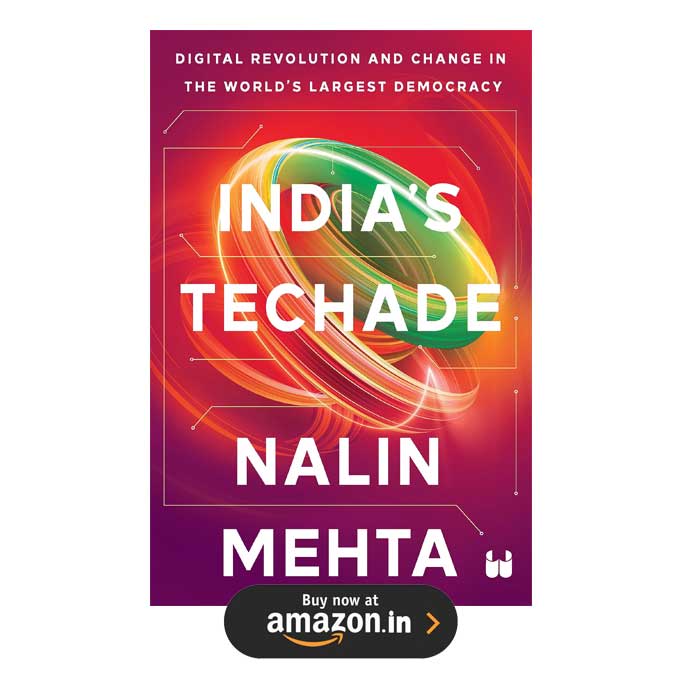This article was first published on The Times of India | September, 10, 2023
UPI services for foreign delegates, a VR cycle depicting India’s digital journey and a showcasing of India’s digital public infrastructure (DPI) like Aadhaar, direct-benefit-transfers and DigiLocker formed a key part of India’s diplomacy at the Bharat Mandapam in Delhi.
India’s soft power was once limited to the strength of its ancient culture, traditions and hospitality. Its digital revolution has added a powerful new lever of influence to this quiver.
The push to create an India-led multilateral institution — the One Future Alliance and the Global Digital Public Infrastructure Repository— to take the Indian experience global reflects the importance of this thrust.
India’s digital revolution is unlike any that came before. Over two decades, the world’s largest democracy combined the rise of cheap mobile phones, cheap data and a unique digital ID system to create an unprecedented revolution in digital public goods. Crucially, it was largely enabled by the actions of the state and public institutions. It deeply disrupted the way Indians deal with money, with each other and with the government. This changed the basic plumbing that underlies Indian society, transforming politics, the government’s relationship with every Indian and the nature of the state itself.

It is easy to forget how recent the shift is. In a little over a decade, India built a melange of public digital platforms that have transformed lives. This DPI basically consists of three broad pillars: identity, payments and data management. Its base was laid with the Aadhaar biometric identity system created in 2009. By December 2022, India had 1.35 billion Aadhaar enrolments.
This was followed by systems like UPI which made digital payments as easy as sending an SMS on your mobile phone or scanning a QR code. In August 2023, India recorded 10.58 billion UPI transactions. UPI accounted for as much as 73% of all non-cash retail transactions. In global terms, this meant that India was now home to 46% of the world’s real-time digital payment transactions.
The third pillar is focused on data services like DigiLocker, through which people can access their authenticated government-verified documents like driving license, education records, tax records and so on. By December 2022, India had more than 137 million users of DigiLocker.
A major impact of DPI has been on financial inclusion. India brought almost half a billion people into the banking system over the past decade. In eight years, India opened over 462 million new bank accounts for the poor through the PM Jan Dhan Yojana. That’s more than the entire population of the US, France and the UK put together.
DPI enabled India to reach a financial inclusion rate of 80%. This might otherwise have taken 43 years to reach, as a World Bank G20 policy document has emphasised.
Further, the rise of DPI meant that India significantly expanded the scale and scope of its welfare state between 2013 and 2023 through direct-benefit transfers (DBT). Government data shows that the initial 10.8 crore beneficiaries of DBT reported in 2013-14 (many of whom were added under UPA) went up by over eight times to 92.3 crore beneficiaries by 2022-23.
Actual direct cash payments into people’s bank accounts went up by over 34 times from Rs 7,367 crore in 2013–14 to Rs 2.55 lakh crore in 2022-23. If you add transfers in kind (such as foodgrains under the public distribution system), then total transfers went up by more than a whopping 110 times in the same period. In other words, this digital transformation also changed the nature of the relationship between the state and the poor.
Read full article on The Times of India
This article was first published on The Times of India | September 10, 2023


